4. Molting and Maintenance
Molting
High Maintenance Feathers
Feathers are complex, high maintenance structures and subject to a lot of wear and tear. Because they are dead structures, they cannot repair themselves when damaged. Unlike finger nails and hair, the keratin that feathers are made of stops growing when fully grown and begins to weaken as it ages with negative effects on flight and insulation.
What is Molting?
In a process known as molting, they are replaced with fresh new plumage, either completely or partially, and sometimes annually, or in the case of some species, more frequently.
How do birds Molt?
This molting process is carefully synchronised so that feathers are shed and regenerate in turn over several weeks so the bird can keep its protective outer layer and maintain its ability to fly. Once a the new plumage has matured, the molt is complete until the next cycle although there may be new growth in between if feathers are lost. Usually the cycle is completed in four to twelve weeks although ducks can molt much quicker with a brief period without flight where they are restricted to the water.
When do Birds Molt?
In addition to the basic conditions requiring the shedding of old plumage, there are two life cycle events related to molts: juvenile to adult and non-breeding to breeding, and back to non-breeding. The impact of this process are illustrated in more detail in the Bird Watch chaper and here in Feathers, the Colour and Camouflage section. In this section we look at the process itself in more detail.
The Juvenile Molt
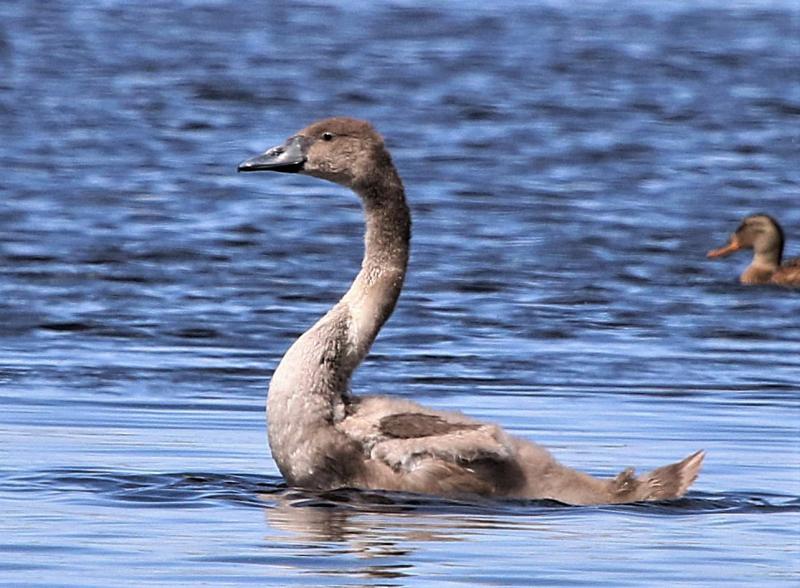
Mute Swan (cygnet)
This swan juvenile or cygnet is probably less than one year old and beginning to replace the immature brown down feathers with the white plumage of adulthood. At this early stage of "transition" it is still the ugly duckling of the Hans Anderson story
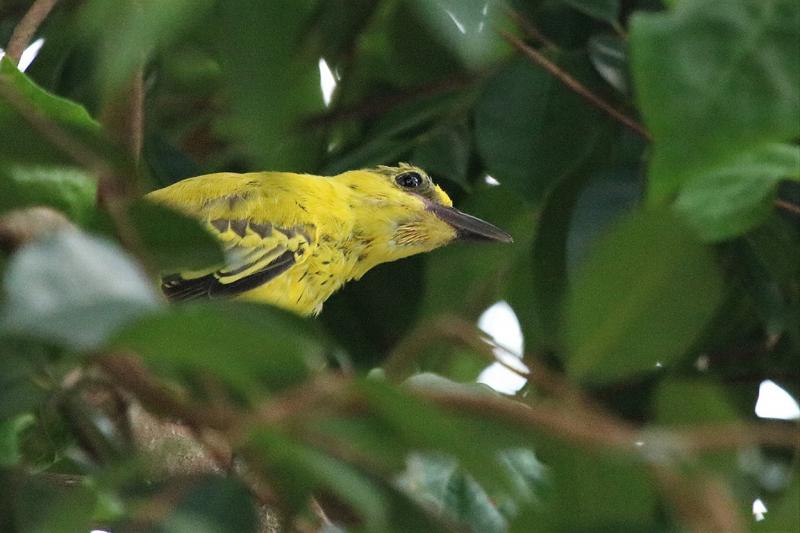
Black-naped Oriole (Fledgling)
This "fledgling"black-naped oriole, photographed on Penang Island, Malaysia, is nearing the completion of its moltinto mature plumage. Visible around the throat, the old quills are falling out and new feathers are growing in their place with gaps still visible in the plumage. The adult black band across the eye is just beginning to appear.
The Adult Molt
Molting consumes a great deal of energy so occurs outside the intensely active periods of the breeding season and migration. Therefore, there are two common and convenient times for adult birds to molt. The first is just before the breeding season when there is no demanding nest building or chicks to rear and the old plumage is cast aside in favour of colourful dispays that will attract a mate. The second is just after the breeding season and before migration so that feathers are renewed for the long journey ahead.
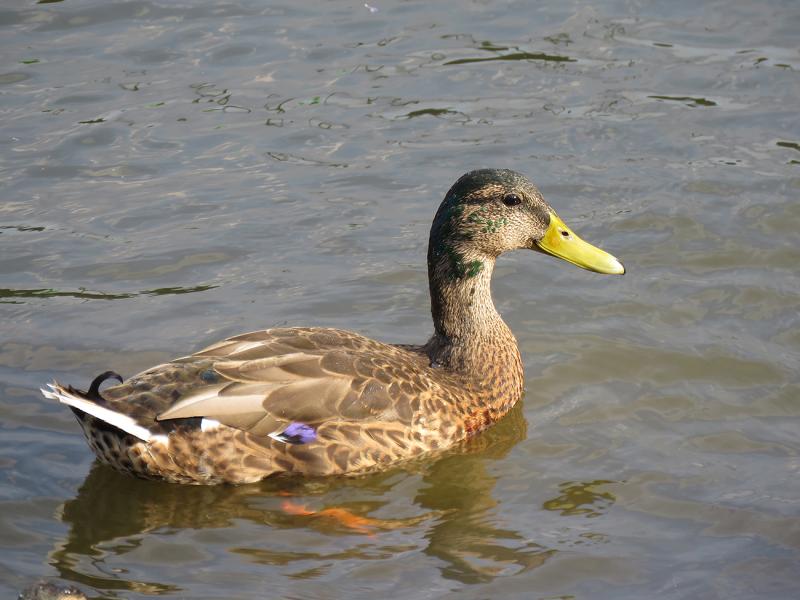
Mallad Drake
Photographed in July on the River Vltava, Prague, Czech Republic, this transitioning drake mallard retains features of its breeding plumage in the green neck patches and the purple feathers on the flank. This is probably a transition to "eclipse" or non breeding plumage as July in the northern hemisphere is the end of the breeding season.
Molting - Beware!
Molting is always a risky business exposing birds to "predation" (fatal attacks by predators) because of impaired flight, and also making them vulnerable in bad weather because of poor insulation.
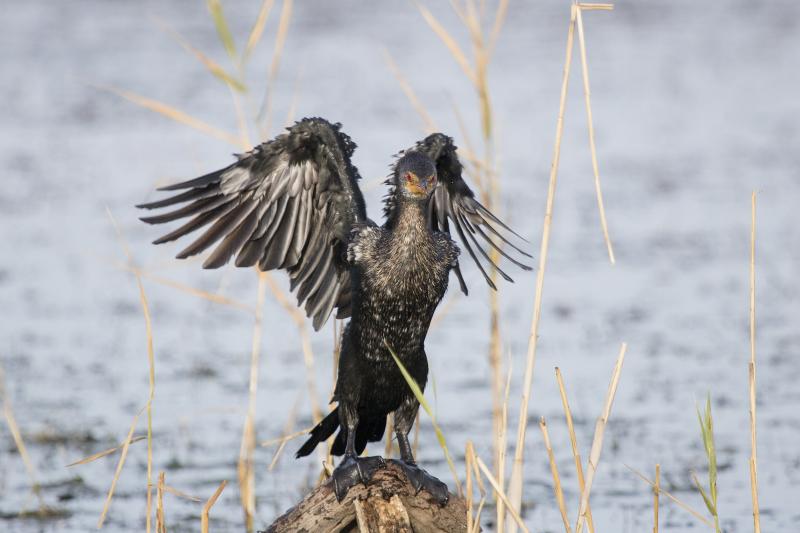
Reed Cormorant
This reed cormorant drying its wings in the sun at Bo-langvlei, Western Cape, South Africa, looks positively demonic with its bright red eyes and battered wing feathers. This is a serious molt to the left wing which looks as though it might threaten flight and expose the bird to risk of predation.
Preening
Preening is the term used to describe the ways in which birds employ their beaks and feet in order to keep their feathers in good condition and waterproofed. It's a process that birds engage in several times a day in order to keep up to 25,000 feathers fully functional. Preening removes parasites, dust and other contaminates and is also a way of keeping feathers properly aligned in relation to the surrounding feathers.
The Preen Gland
For most bird the key to successful preening is the "uropygial gland" located close to the base of the tail. Also known as the preen gland, it produces an oily, waxy secretion that waterproofs feathers and ensures they remain flexible. The secretion emerges through two small nipples (papilla). Birds stimulate the gland with their beaks and evenly smear the oil on each feather so they are well coated and protected.
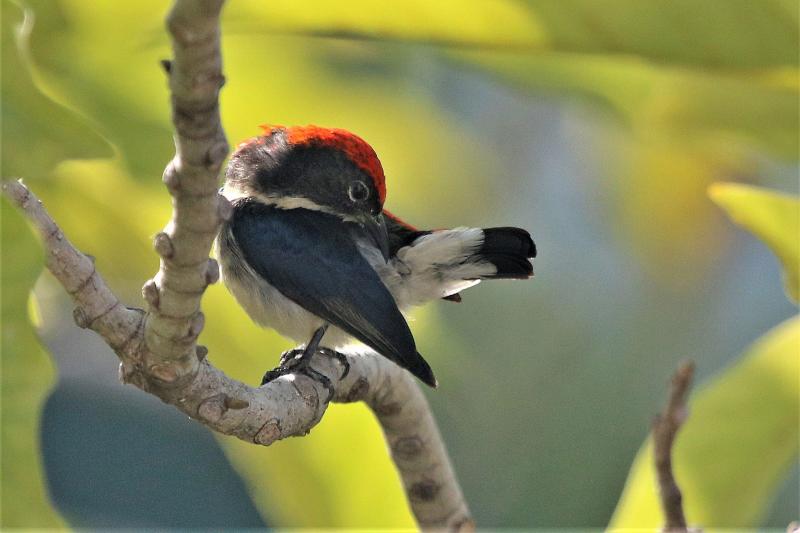
Scarlet-backed flowerpecker
By twisting its head 180 degress and lifting its tail to meet its beak, this scarlet-backed flowerpecker is able to access its uropyegial gland and the oily, waxy secretions that enable it to maintain healthy feathers. Photographed in Bangkok, Thailand.
Preening with Beak and Feet
Using both beak and feet birds nibble and stroke every single feather from its root to its tip to ensure it is properly aligned and the best aerodynamic shape for flight. If you have watched birds for any length of time you know that birds will contort their bodies into all sorts of strange postions in order to ensure a rigorous preen.
Bathing
Preening is not restricted to behaviours involving the preen gland. Birds also bathe in both water and dust to remove parasites and fungi. Dust baths have the additional advantage of absorbing excess preen oil.

Red-billed Quelia
This flock of red-billed quelia is enjoying a bath at a watering hole in Kruger National Park, South Africa
Sunbathing
Birds sunbathe to discourage parasites and to thin preen oil to make it easier to spread.
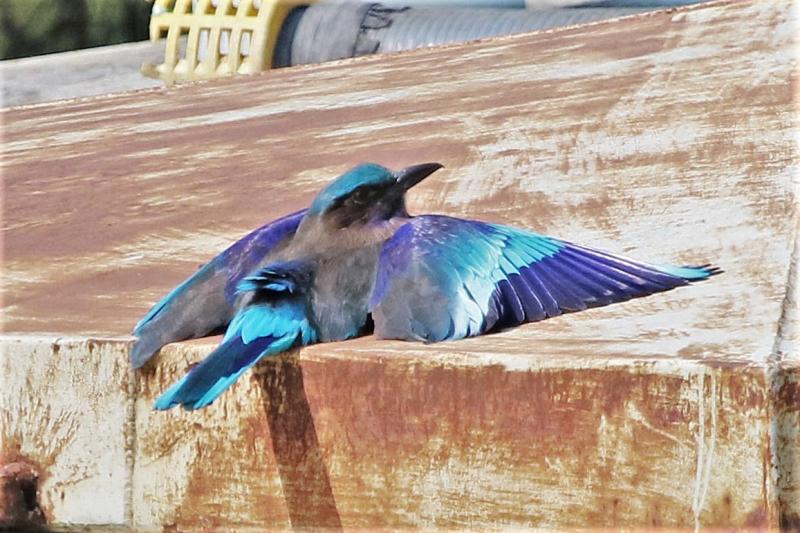
Indian Roller
This beautiful bird is sunbathing on a water tank so keeping cool and encouraging lice and other parasites to move out of the heat and on to other more accessible parts of the body where they can be dealt with more easily by beak and feet. Photographed in Suan Rot Fai Park, Bangkok, Thailand.
Stretching and Fluffing
Another popular strategy is stretching and fluffing up feathers. Stretching creates space between feathers which facilitates grooming. Both stretching and fluffing help align feathers. Finally, some birds will use formic acid from ants to kill parasites, rubbing ants over their bodies or lying on anthills.
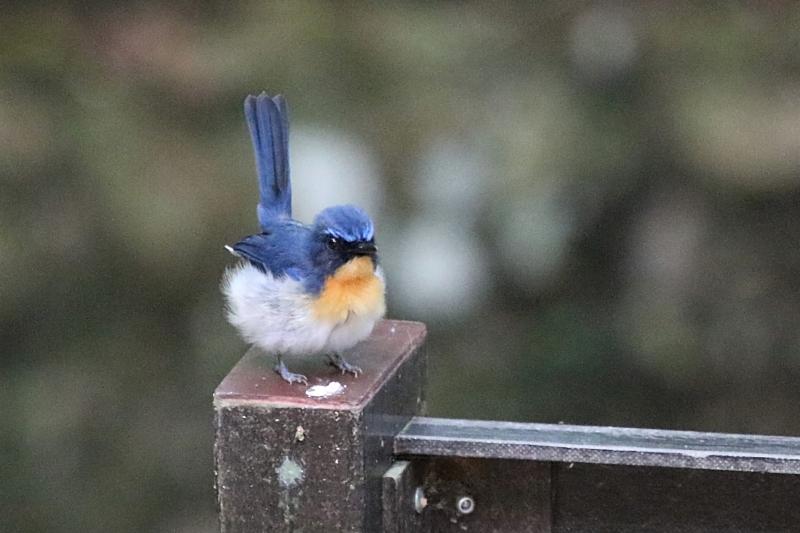
Malaysian Blue Flycatcher
A malaysian blue flycatcher on a gate post in Taman Negara, Peninsula Malaysia, fluffs up its feathers aligning them and making them more accessible for preening.
Rock Kestrel
A rock kestrel stretches to align its wing feathers and preens at the same time. Photographed on the Robberg Penninsula, South Africa.
Preening Bonuses
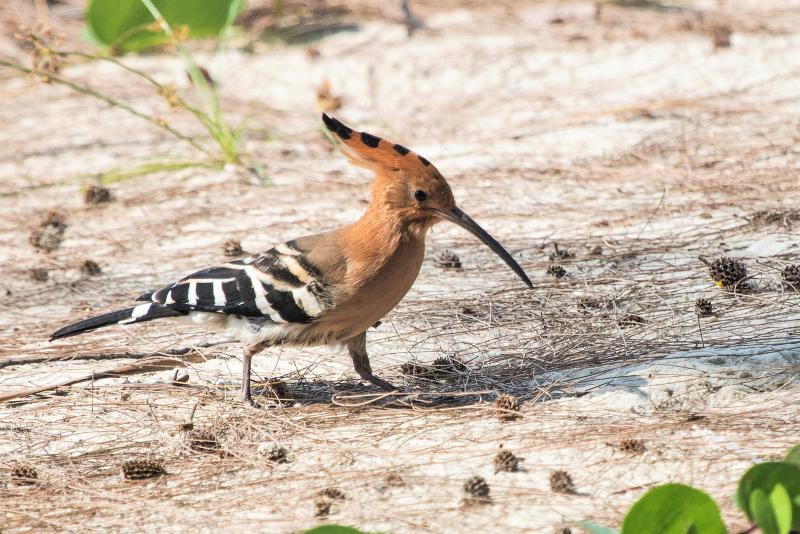
Eurasian Hoopoe
A few species have evolved interesting additional advantages through their uropygial gland. For instance, hoopoes have "symbiotic" (mutually beneficial) bacteria in their uropygial gland which reduce the virulence of bacteria that damage feathers. Photographed at Khao Lom Muak, Thailand.

Greater Flamingo
The greater flamingo's uropygial gland secretes an additional organic pink pigment that dyes feathers pink. Preening increases during the breeding season in order to enhance the pink colour that attracts a mate. The couple above photographed at Walvis Bay, Namibia, are preening as they walk. In fact a preening is important for all birds as a means of keeping their plumage attractive so they are competitive when trying to attract a mate.

Arrow-marked Babbler
Some species engage in mutual preening ("allopreening") as a form of bonding between male and female partners. These arrow-marked babbler in Kruger National Park, South Africa, are engaged in bonding as the male preens the female.
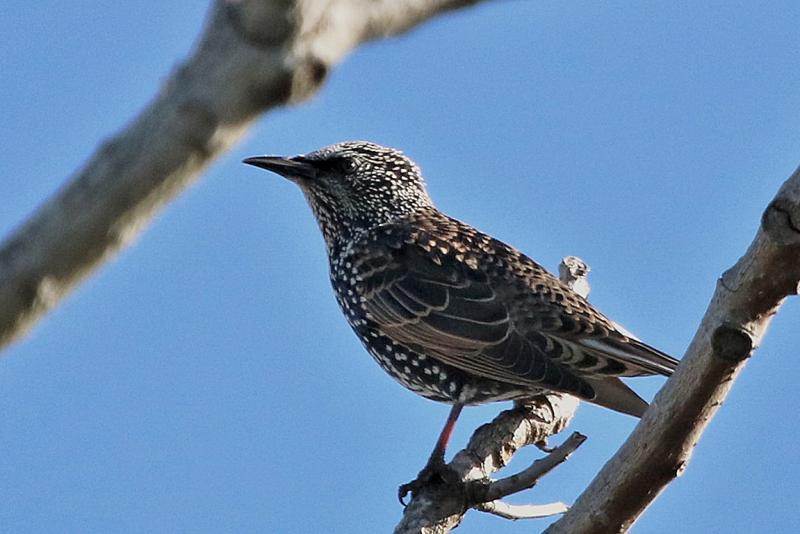
Common Starling
Some species, usually passerines, like this common starling photographed on Leisure Island, Knysna, South Africa, pick up ants in their beaks and preen with them using the ants' formic acid to kill off parasites. Other species will actually bathe in ants nests to achieve similar results.
Birds without Preen Glands
There are a few bird families whose members lack a preen gland. These include flightless birds such as ostriches, emus and cassowaries. Bustards, owls, parrots and pigeons also lack the uropygial gland. Instead they have "powder down"which are specialised feathers that disintegrate into powdery keratin that serves the same function as preen gland secretions. These are the only feathers that grow continuously throughout a bird's life. Birds that rely on powder down tend to bathe less, do not live in an aquatic environment, and in some cases live in more arid regions.
Red-crested Bustard
This female red-crested bustard inhabits the dry savanah of Kruger National Park, South Africa and lacks a preen gland.